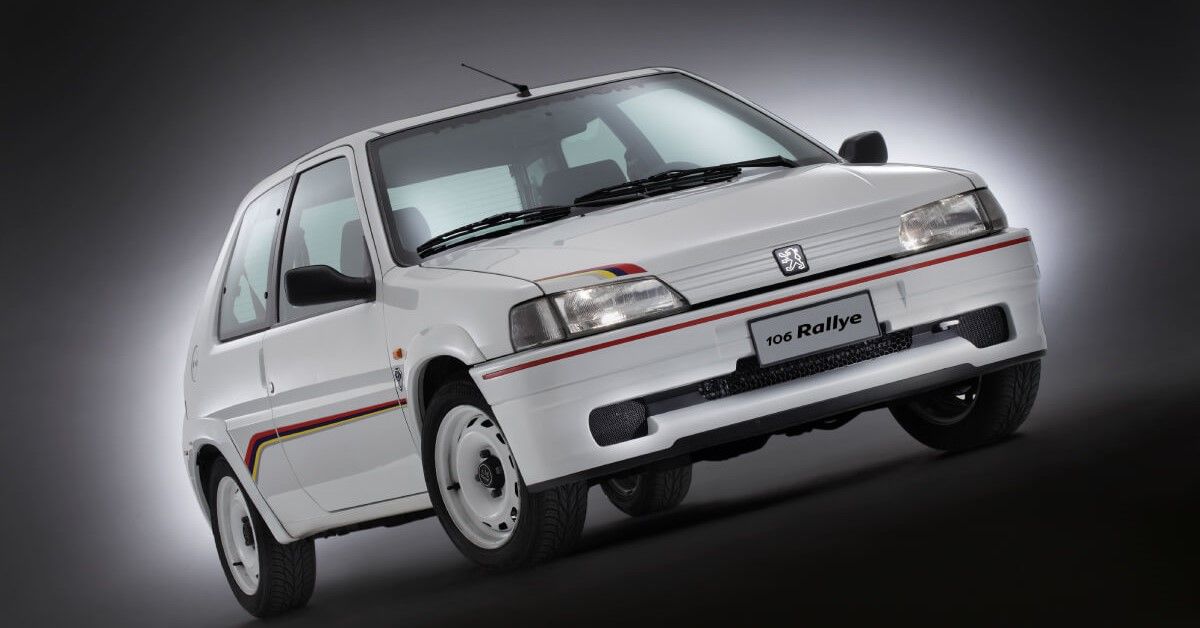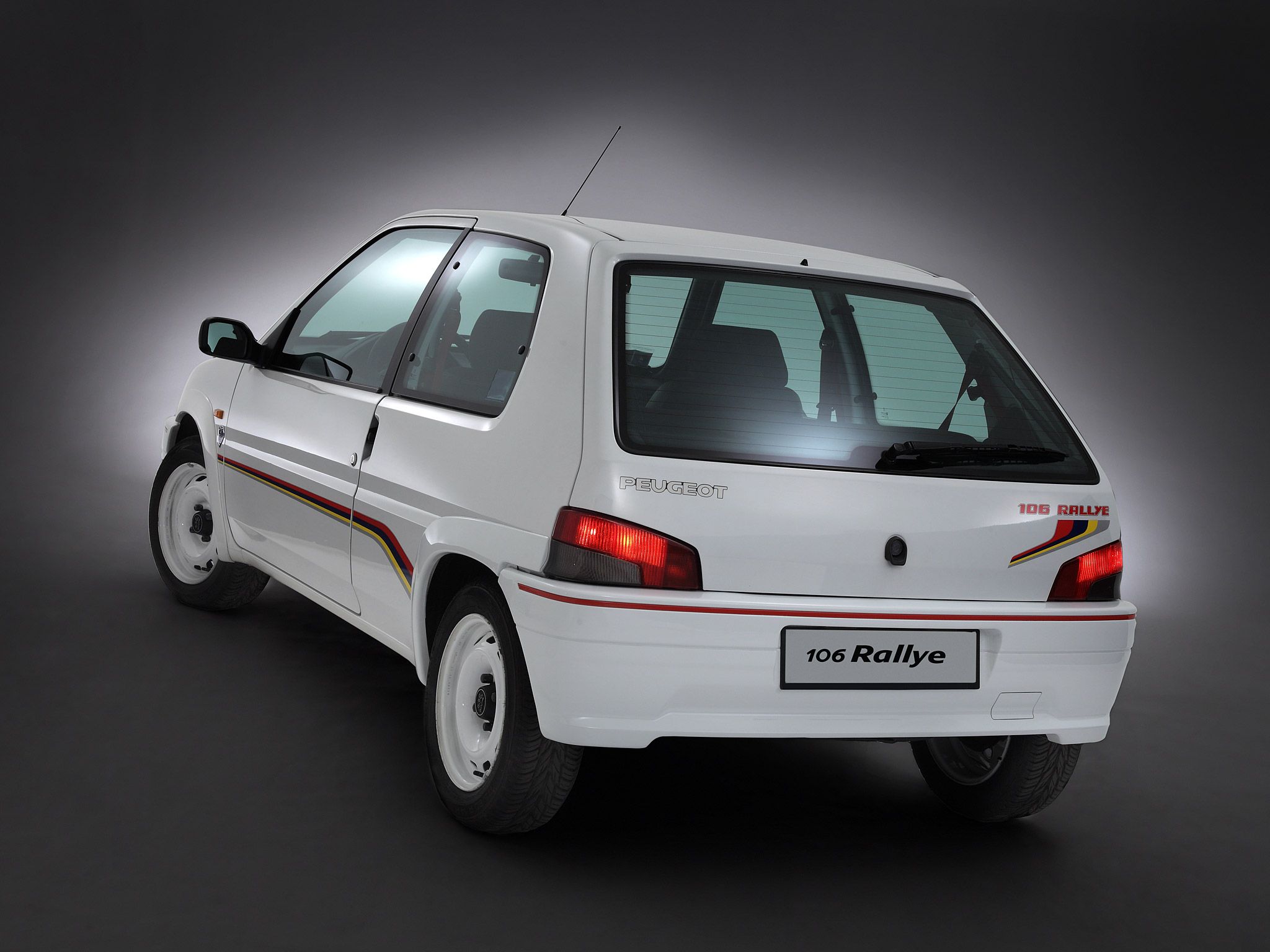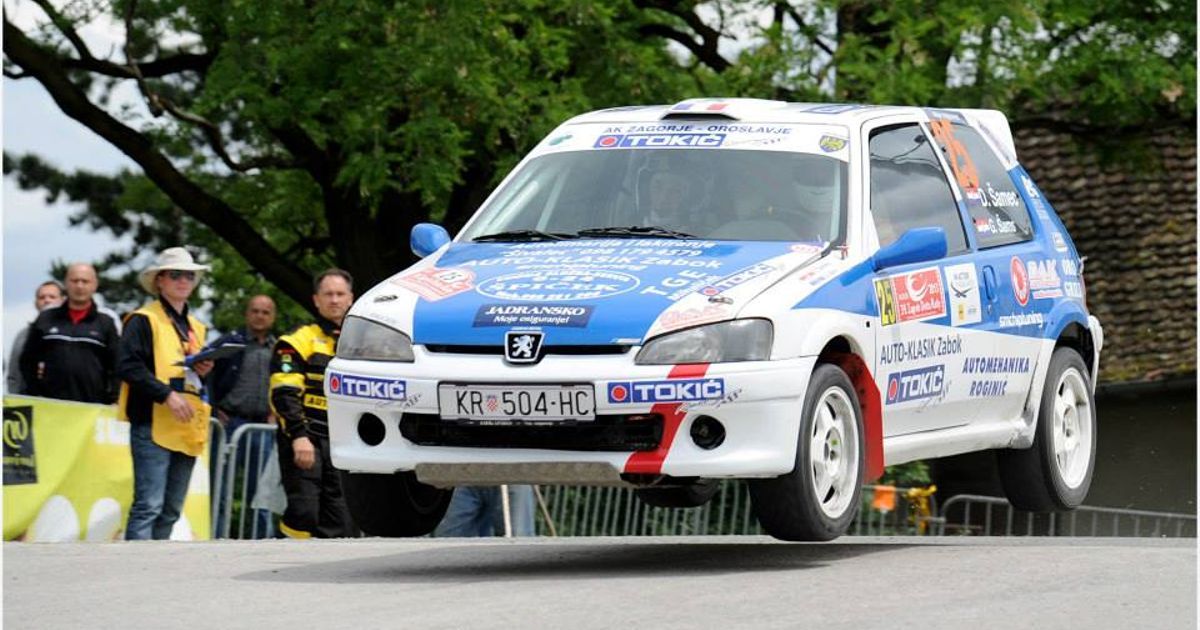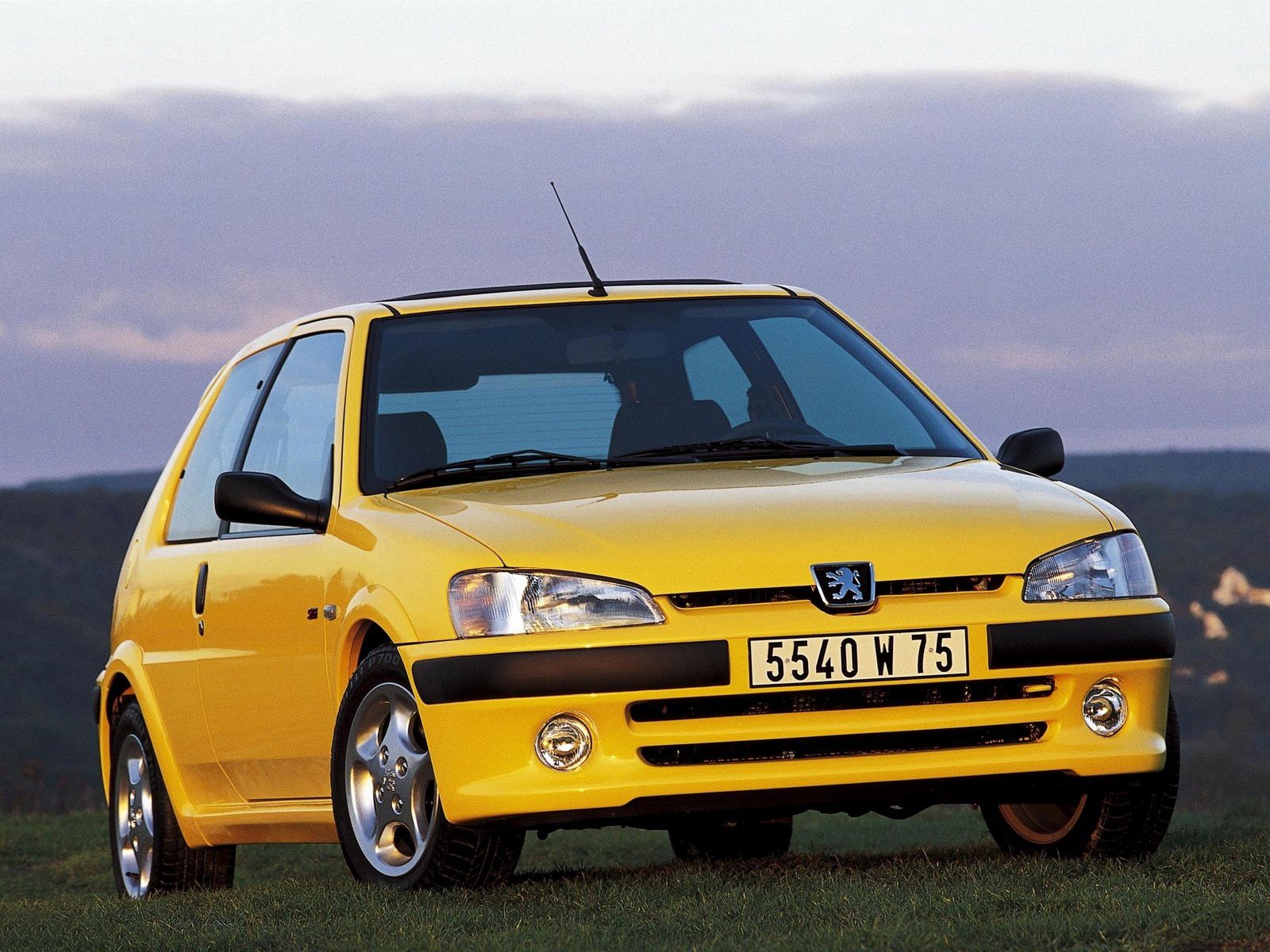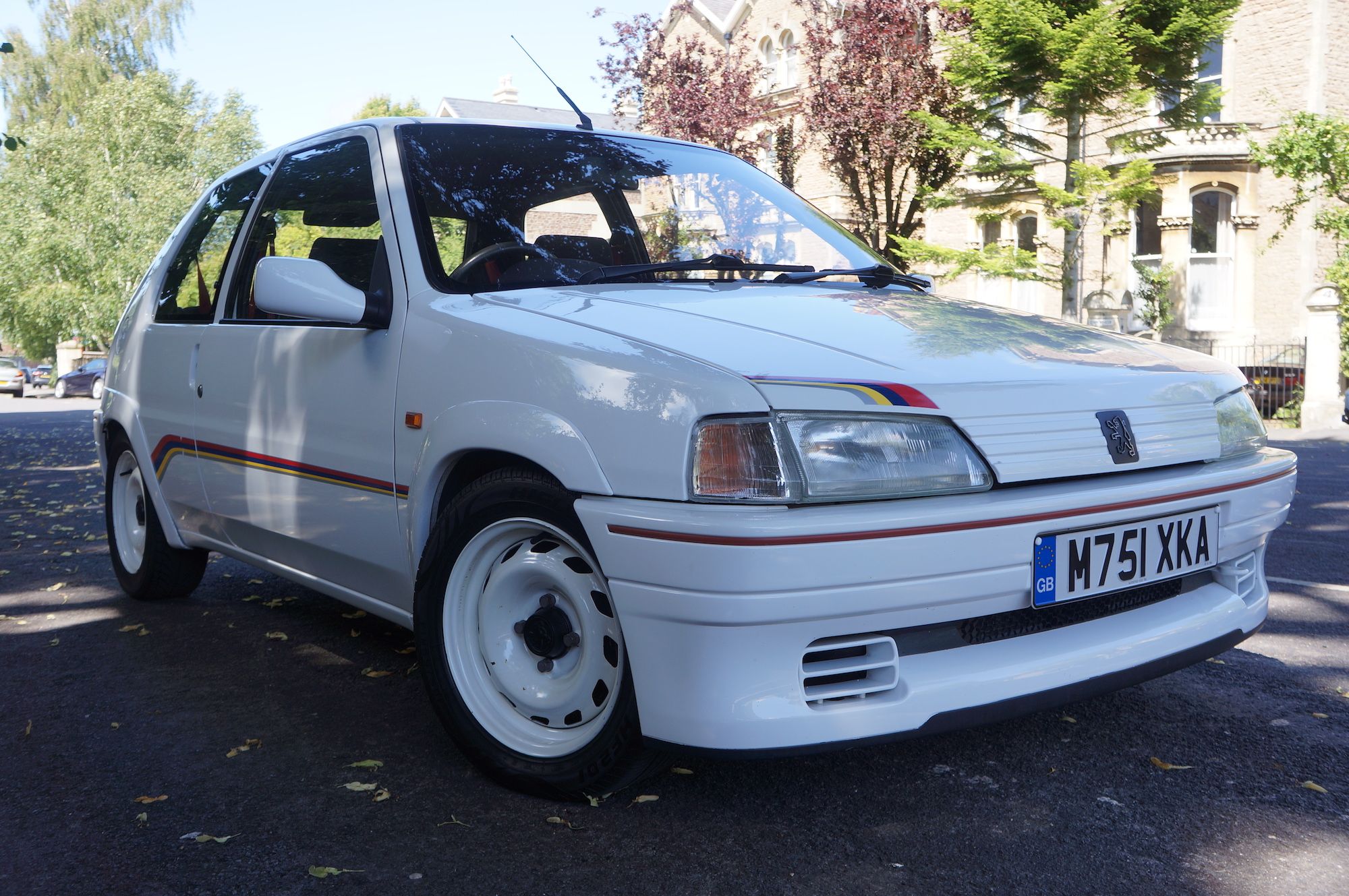Time to put on the rose-colored spectacles once more to examine a small city car, that although obscure to many parts of the world and from a French manufacturer, has the makings of a future classic.
This is the Peugeot 106 – but not just any 106, because the basis of the Rallye comes from a small, economical city car from France with entry-level engine options and not much equipment as standard, not to mention the fact that it was marginally larger than the box your new pair of Stan Smith shoes would come in at the store.
It is from this humble outline that the baby Peugeot would grow albeit figuratively – it would transform into the kind of machine that would turn it into something better. It would still be able to move 4 full-size adults, pick up a (small) number of groceries, and be parked in any space you choose in any car park or nook you can find. But it could also provide serious fun at medium speeds and put a grin on your face wider than you would have thought possible before you turned the key.
Simple Recipe, Simple Fun
Here’s why the Peugeot 106 Rallye works: it builds on a similar formula to the French automaker’s own previously successful car, the revered 205 GTI.
That was a small city car too, with a revvy and for the time, reasonably powerful 1.6 and later 1.9-liter naturally aspirated gasoline engine. When coupled with the lightweight grocery-friendly body on a better chassis with firmer suspension, it was enormous fun. For the 106, there was a need to make a homologation car to compete in the 1300cc class so the 106 Rallye was released with 100hp from a 1.3-liter engine.
It lost most of its non-essential equipment not just to keep you focused on the apexes, but to reduce its weight down to 825kg or 1800lbs more or less – the MK1 Lotus Elise weighed 1600lbs for reference so the Peugeot 106 was only a large person more on the scales.
It’s All About The Bends
The Peugeot 106 Rallye arrived in 1994 but in 1997, after the standard car was refreshed and restyled the engine was changed to the 1.6-liter 103hp unit with a tendency to be more relaxed and less revvy than the prior model. Arguably the power discrepancy between the 205 GTi and 106 Rallye, with was around 25hp (a lot for the time and for the performance on offer) was less balanced out slightly when you took into consideration that the Rallye was lighter by more than 70lbs.
With a high 8-second 0-60mph time for the 106 against the sub-7-second time for the hallowed 205 you might be right in assuming it was not as fast and so less accomplished as a hot hatchback car, but this was missing the point.
It was a simplified, spartan car designed for sprinting and corners than for marathons. With less weight and a focus only on the wheel and three pedals (it was always a stick-shift), it felt purer.
One GTI To Rule Them All
Well, not quite, but as you will see the GTI was pretty good – this was the actual flagship performance version of the 106 and potentially the best known, arriving in 1997 with the restyled body and sporting a 1.6-liter engine which was capable of 120hp (up at least 15hp from the second Rallye in 1996) and could make 130mph and hit a low-7-second 0-60mph time.
This was the car that was to carry the mantle of the 205 GTI and it would, however, the Rallye was in a class of its own. Unlike the Lotus Elise, the Rallye was a cheap city car lightly modified to be a baby rally car, however like the Elise, the 106 Rallye was focused on weight saving at all costs and as such it still saved 275lbs over the 106 GTI, this time the mass of a WWE wrestler. Maybe.
Although the performance was less than the GTI version of course, and the weight difference wasn’t enough to offset the power deficit, the Rallye was lauded by contemporary reviewers in Europe and to this day it is considered by some to be the better of the two cars for the drive it provides. It also could come with white-painted steel wheels which helped it look like a proper rally car.
The Last Hurrah
Following the lineage of sporty and compact Peugeots, although sadly still not available in the US, was the excellent GTI-6, a six-speed 2-liter 170hp version of the small 306 hatchbacks which came after the 205.
The 206 GTI, although available later with a 180hp 2-liter engine somehow didn’t manage to steal the 205 GTI’s crown and after that the other GTI badged cars like the 207 and 208 had altogether lost the recipe or failed to follow the instructions, resulting in lukewarm performance and handling with fun engineered-out.
Peugeot has started to make some quick, fun cars again more recently, including the interesting RCZ. It could be, however, that the 106 Rallye, one of the last pure sporty Peugeots to follow in the 205’s image, might soon become much more coveted among the masses and recognized as one of the greats. Either way, we hope that the white steel wheels might consider making a comeback soon on another model.

